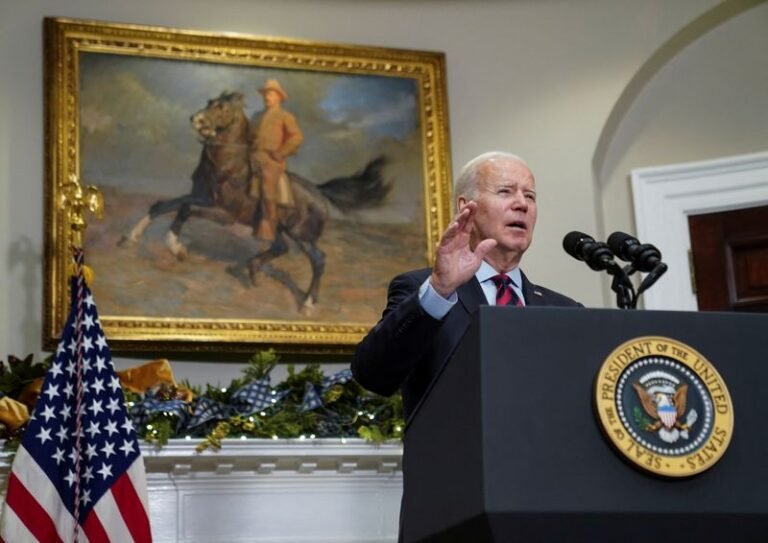
In November, Mr Biden said he was convinced of the legality of the plan and announced new temporary relief for borrowers, which could mean their next loan payment is not due until August 2023.
WHAT’S THE LATEST NEWS?
The US Supreme Court said on December 1 that it would hear Biden’s request to reinstate his plan, following a challenge from six states that have accused his administration of overstepping its authority, during its current session. from the end of February to the beginning of March.
On November 22, Biden said he would extend the COVID-19 pandemic-era pause in student loan payments until June 30, 2023, to allow the high court to rule. investigate requests from his administration that affect loans, the Department of Education.
Payments will resume 60 days after the break ends, Biden said.
WHAT HAPPENS NEXT WITH LAWSUITS?
The Supreme Court has agreed to hear the Biden administration’s request to delay a Nov. 14 ruling by the 8th U.S. Circuit Court of Appeals, based in St. Louis, Missouri, which granted an appeal. Arkansas, Iowa, Kansas, Missouri, Nebraska and South Carolina.
On Dec. 2, the administration also asked judges to delay a separate ruling on Nov. 10 by a Texas judge appointed by former Republican President Donald Trump who ruled that the debt relief plan was illegal. The administration did so after the New Orleans-based 5th Circuit United States Court of Appeals earlier this week declined to stay the judge’s ruling.
WHO IS ELIGIBLE FOR DEBT FORGIVENESS?
The program cancels $10,000 of federal government debt for people earning less than $125,000. It also cancels $10,000 in debt for couples with incomes below $250,000 and up to $20,000 in debt held by Pell Grant holders, who are mostly low-income borrowers.
WHAT IS THE STATUS OF APPLICATIONS?
About 26 million Americans have applied for student loan cancellations since August, and the U.S. Department of Education has already approved applications for 16 million of them. The government stopped taking new applications Nov. 11 after a Texas judge blocked Biden’s order.
Borrowers who have not yet applied can sign up to receive email updates.
WHAT DO THE READERS SAY?
US readers support debt forgiveness by narrow margin; about 15% of readers say they might be affected by the plan, according to an Economist/YouGuv poll.
The six Republican-led states that have sued to block Mr. Biden’s executive order say he circumvented congressional authority and that the plan threatens future tax revenues and money earned by entities, governments, that invest in or administer student loans.
Deep South states will get the biggest benefits per borrower from Biden’s order, according to a study by the Federal Reserve in New York, including South Carolina, one of the six states behind the lawsuit:
A handful of states may consider student loan debt forgiven as taxable income, financial advisers warn.
WHY IS OUR STUDENT DEBT SO HIGH?
The cost of higher education has skyrocketed in the United States over the past three decades, doubling at private four-year colleges and universities and rising even more than at public four-year schools, according to research by the non-profit organization College Board. Student loan balances almost quadrupled between 2006 and 2019.
American borrowers have about $1.77 trillion in student debt, according to the latest numbers from the Federal Reserve. The vast majority of this sum is owned by the federal government.
Biden’s student loan cancellation plan could add $300-600 billion to the federal debt, economists estimate.